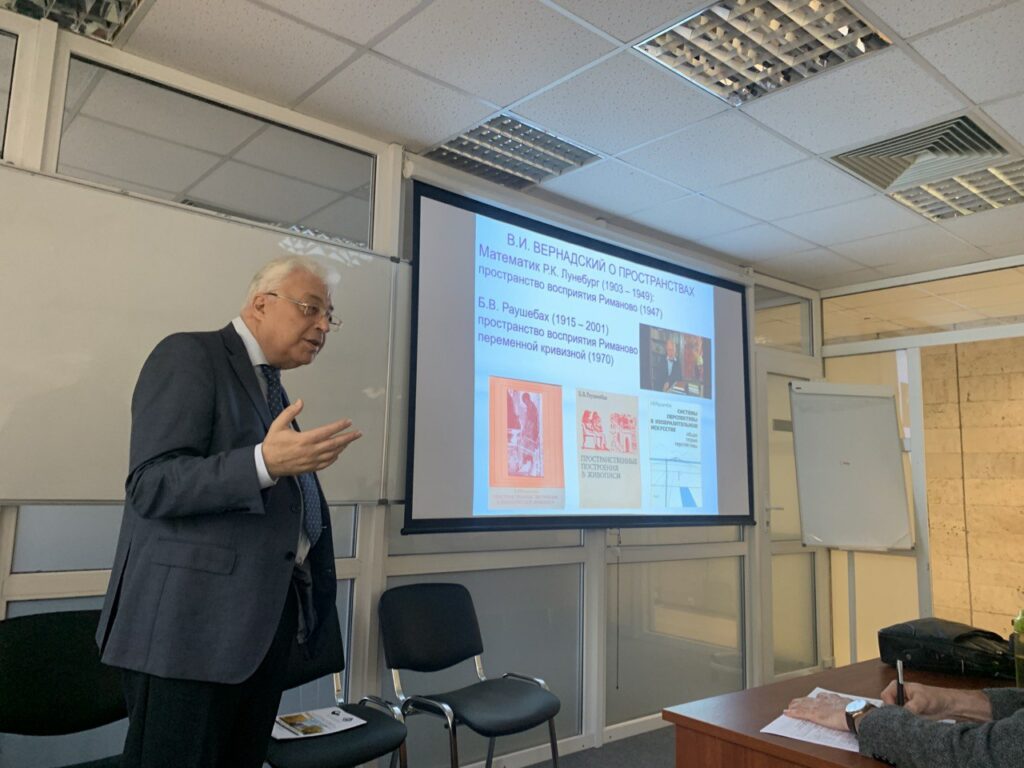
Yuri Baturin’s plenary report “Digital Earth as a technical substrate of the Noosphere”
On September 20, 2023, the traditional session “Digital Earth and Big Data” of the Graphicon conference was held in Moscow for the seventh time. This year discussion was inspired by the position paper “Digital Earth: Yesterday, Today, Tomorrow”, which contains an updated Digital Earth Vision 2030 and has become the cornerstone of strengthening the scientific sovereignty of the Digital Earth. The discussion of the new scientific situation and new opportunities for the development of the Digital Earth took a central place at the conference.
Also, the session “Digital Earth and Big Data” in 2023 was organized for the first time with the active participation of the emerging young section of the Russian ISDE Chapter. The session, at which various scientific disciplines were presented, contributed to the formation of an interdisciplinary vision of the geospatial revolution among the participants, the ability to formulate and solve advanced scientific agenda. The session featured reports on remote sensing, law and ethics, neural networks, economics, fundamental problems of cognition, and a retrospective of the development of the Digital Earth. A total of 11 reports were presented.
The session opened with a plenary report by the professor Yuri Baturin’s “Digital Earth as a technical substrate of the Noosphere”, in which, in the jubilee year for the concept of the noosphere, the problems of searching for a conceptual apparatus and formalism capable of explaining the processes of thinking as a noospheric (geocentric) phenomenon were outlined. Eugene Eremchenko presented a roadmap for the development of the Digital Earth in the mirror of scientometric indicators. In their reports Nikita Nosov, Sona De Apro and Valery Panin considered the trends in the development of the Digital Earth in the interests of security and in the context of new scientific and technological phenomena – virtual reality, artificial intelligence and the concept of metaverses. The following report by the authors Egor Grebenyuk and Sergey Rotkov contained a large volume of interesting facts about the economic aspects of laser scanning. Daria Makiyenko and Ilya Safonov made an informative review of open well data sets. The report of Roman Larionov, Alexey Sennikov and Vladimir Khryashchev was devoted to the development of an algorithm for detecting changes in forest cover from satellite images. In the works of Yuri Gromov, Igor Ishchuk, Vladimir Rodionov and Bogdan Telnykh, the use of artificial intelligence and neural networks in the processing of remote sensing data and in the planning of UAV survey routes were considered. An exceptionally interesting report of Konstantin Pukhkii, Pavel Pakhomov and Vadim Turlapov on the classification of hyperspectral remote sensing images using high-level features based on empirical modes completed the session.
The eventful program of the session left no time for the usual final discussion – it will be continued on the pages of the Geocontext almanac, other ISDE scientific publications, in research laboratories and in personal communication with a growing circle of geospatial revolution enthusiasts who are increasingly shaping its global agenda.
Next year, 2024, the conference is planned to be held in Omsk, Russia.

2006-2023 All Rights Reserved 京ICP备06045536号-1 京公网安备 11010802041631号